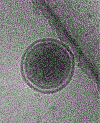Exosomes, microvesicles, and other extracellular vesicles-a Keystone Symposia report
- PMID: 36961472
- PMCID: PMC10715677
- DOI: 10.1111/nyas.14974
Exosomes, microvesicles, and other extracellular vesicles-a Keystone Symposia report
Abstract
Extracellular vesicles (EVs) are small, lipid-bilayer-bound particles released by cells that can contain important bioactive molecules, including lipids, RNAs, and proteins. Once released in the extracellular environment, EVs can act as messengers locally as well as to distant tissues to coordinate tissue homeostasis and systemic responses. There is a growing interest in not only understanding the physiology of EVs as signaling particles but also leveraging them as minimally invasive diagnostic and prognostic biomarkers (e.g., they can be found in biofluids) and drug-delivery vehicles. On October 30-November 2, 2022, researchers in the EV field convened for the Keystone symposium "Exosomes, Microvesicles, and Other Extracellular Vesicles" to discuss developing standardized language and methodology, new data on the basic biology of EVs and potential clinical utility, as well as novel technologies to isolate and characterize EVs.
Keywords: exomere; exosome; extracellular RNA; extracellular vesicle; mitovesicle; supermere.
© 2023 New York Academy of Sciences.
Conflict of interest statement
COMPETING INTERESTS
Niek Dekker is employed by AstraZeneca R&D. Michele de Palma is an inventor on a patent application filed by EPFL (WO2017134100A1) on engineered dendritic cell vaccines and serves on the scientific advisory board of EVIR Therapeutics, a start-up focused on the development of engineered dendritic cell vaccines for cancer therapy.
Figures



References
-
- Théry C, Witwer KW, Aikawa E, Alcaraz MJ, Anderson JD, Andriantsitohaina R, Antoniou A, Arab T, Archer F, Atkin-Smith GK, Ayre DC, Bach J-M, Bachurski D, Baharvand H, Balaj L, Baldacchino S, Bauer NN, Baxter AA, Bebawy M, … Zuba-Surma EK (2018). Minimal information for studies of extracellular vesicles 2018 (MISEV2018): A position statement of the International Society for Extracellular Vesicles and update of the MISEV2014 guidelines. Journal of Extracellular Vesicles, 7, 1535750. - PMC - PubMed
-
- Cocozza F, Grisard E, Martin-Jaular L, Mathieu M, & Théry C (2020). SnapShot: Extracellular vesicles. Cell, 182, 262–262.e1. - PubMed
MeSH terms
Substances
Grants and funding
LinkOut - more resources
Full Text Sources

